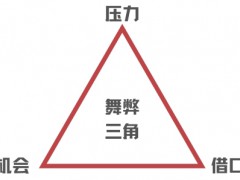欧佩克+还远未达到其总配额
即将到来的石油供应过剩可能比预期要少得多 今年油价下行压力可能也会小得多
需求依然强劲 布伦特原油6个月期合约价差自去年12月触及低点以来已上涨逾一倍
2022年初 奥密克戎病例飙升和许多主要经济体创纪录的病例 再加上石油市场预期供应过剩 给了熊市论者一个欢呼的理由
据1月13日今日油价报道,油价在今年第一个交易周期上涨了5%,原因是分析师们关注的是,供应过剩可能不会像几个月前预测的那么严重,这也是因为2021年底库存水平非常低。此外,世界上许多地缘政治敏感地区的石油产量波动很大。
预测人士和分析师表示,疫情的发展将继续是今年市场最大的不确定因素,不过,预计2022年全球石油平均需求将开始超过疫情爆发前的水平。
从2021年到2022年,需求将进一步增长,除非许多地方出现新的大规模封锁。多数分析师预测,供应无疑也将增长到超过需求的程度。不仅欧佩克+将继续削减产量,以美国为首的非欧佩克+产油国也将增加供应,特别是在每桶80美元的油价水平上,这意味着欧佩克+产油国和非欧佩克+产油国的产量都将增长。
不过,包括彭博社第一新闻石油策略师朱利安•李(Julian Lee)在内的一些分析师表示,即将到来的石油供应过剩可能比预期要小得多,今年对油价下行压力可能也会小得多。
首先,欧佩克+还远未达到其总配额。投资低迷和欧佩克成员国(特别是非洲成员国)缺乏闲置产能,使得欧佩克+月产量增幅远低于40万桶/天,其中25.3万桶/天分配给受欧佩克协议约束的10个成员国。
根据彭博社和彭博社Lee收集的欧佩克数据,上个月是欧佩克+连续第七个月未能实现增产,也是连续第五个月产量低于目标50万桶/天。
据彭博社估计,欧佩克+在2021年12月产量比其总体产量目标低62.5万桶/天,略高于11月的65.5万桶/天。
欧佩克的情况也好不到哪里去,因为非洲成员国产量正在下降。根据路透社月度调查,欧佩克12月石油日产量较11月仅增加7万桶,因该组织未能按照欧佩克+协议将日产量提高25.3万桶。
此外,尽管该组织预计今年市场仍会出现过剩,但与上月评估相比,可能会有所减少。正如欧佩克在12月中旬月度石油市场报告中所言,欧佩克+继续认为,奥密克戎对需求的影响是“温和而短暂的”。
闲置产能正在减少
然而,所有供过于求的预测都依赖于欧佩克+将实现其产量目标的假设,但它连续七个月都没有实现这一目标。
几个月来,欧佩克+一直未能达到其集体产量目标,并可能在未来几个月继续如此。非洲欧佩克成员国缺乏提高产量的能力和投资,而俄罗斯产量和出口量估计都低于配额。产量不足甚至可能在2022年成为油价一大利好因素,特别是如果奥密克戎对全球石油需求的影响仍仅限于航空燃料的话。
阿拉伯海湾最大产油国有能力提高产量,并实现欧佩克+配额,但这当然会减少他们的闲置产能,而这正是全球闲置产能的主要来源。
由于闲置产能较低,主要集中在沙特阿拉伯、阿拉伯联合酋长国和科威特,2022年的突然供应中断将推高油价。
荷兰国际集团策略师沃伦·帕特森(Warren Patterson)和姚文宇(Wenyu Yao)表示,“欧佩克+闲置产能是供应方面的担忧,短期内不会消失。只有少数几个成员国有能力提高产量,而其他成员国由于供应中断和缺乏投资,未能达到商定的产量水平”。
高盛(Goldman Sachs)非常看好2022年及以后的石油行业,因为该行业投资较低,而且世界上只有沙特阿拉伯和阿联酋两个产油国目前有能力和手段开采比2020年1月疫情爆发前更多的石油。高盛大宗商品研究全球主管杰夫·柯里(Jeff Currie)在接受采访时表示,其他人都在苦苦挣扎。
盛宝银行商品策略部门主管Ole Hansen表示,“总体而言,需求依然强劲,布伦特原油六个月期合约价差自去年12月以来已扩大逾一倍,市场针对奥密克戎会对需求产生影响的担忧情绪不高”。
低于预期的供应增长可能很快就会消除石油大量过剩的确定性,因为不确定性和波动性将继续是今年石油市场唯一确定的两件事。
王佳晶 摘译自 今日油价
原文如下:
The Bullish Case For Oil Prices In 2022
OPEC+ is nowhere near pumping to its overall quota
The coming oil glut could be much smaller than expected and could exert much less downward pressure on oil prices this year
Demand remains robust as signaled in the six-month futures spread in Brent which has more than doubled since hitting a low point in December
At the start of 2022, Omicron’s surge and record COVID cases in many major economies are combining with an expected oversupply on the oil market to give bears a reason to cheer.
Yet, oil prices rose by 5 percent in the first trading week of the year as analysts focused on the possibility that the oversupply may not be as high as predicted a few months ago, also because of very low levels of inventories at the end of 2021. In addition, supply disruptions in Libya and Kazakhstan reminded market players of the volatility of much of the world’s oil production in geopolitically sensitive areas.
COVID developments will continue to be the biggest wild card in the market this year, but average global oil demand in 2022 is expected to exceed the pre-pandemic level from 2019, forecasters and analysts say.
Demand is set to grow even further from 2021 into 2022, barring new mass lockdowns in many places. Supply will no doubt also grow to the point of exceeding demand, most analysts predict. Not only is OPEC+ set to continue unwinding its production cuts, but non-OPEC+ producers—led by the United States—will also raise supply, especially at $80 oil, which means that global crude oil production is set to grow from both OPEC+ producers and those outside the pact.
However, the coming oil glut could be much smaller than expected and could exert much less downward pressure on oil prices this year, some analysts, including Bloomberg First Word oil strategist Julian Lee, say.
First, OPEC+ is nowhere near pumping to its overall quota. Depressed investments and a lack of spare capacity at many producers in the pact, especially African OPEC members, have made monthly oil production increases much lower than the allowed 400,000 bpd for OPEC+, of which 253,000 bpd is allocated to the ten OPEC members bound by the pact.
Last month was the seventh consecutive month in which OPEC+ had failed to deliver on its production increase, and the fifth straight month in which it had undershot its target production by more than 500,000 bpd, according to Bloomberg and OPEC data compiled by Bloomberg’s Lee.
OPEC+ produced 625,000 bpd below its overall production target in December 2021, slightly better than the 655,000-bpd shortfall off the target in November, per Bloomberg estimates.
OPEC is not faring much better, with African members dragging output down. According to the monthly Reuters survey, OPEC’s oil production increased by just 70,000 bpd in December from November as the cartel consistently failed to raise its production by 253,000 bpd a month as per the OPEC+ deal.
Moreover, although the group still expects a surplus on the market this year, it could be a smaller one compared to last month’s assessment. OPEC+ continues to see the Omicron impact on demand as “mild and short-lived,” just as OPEC said in its Monthly Oil Market Report (MOMR) in mid-December.
Spare Capacity Is Shrinking
Yet, all oversupply models rely on the assumption that OPEC+ will actually deliver on its production target—something it has not done for seven consecutive months.
OPEC+ has been undershooting its collective production targets for months and will likely continue to do so in the months ahead. African OPEC members lack the capacity and investments to boost production, while Russia is estimated to pump and export lower volumes than its quota. The underproduction could even become a major upside for oil in 2022, especially if Omicron’s dent to global oil demand remains limited to jet fuel, as the most recent estimates and analyses have shown.
The biggest Arab Gulf producers have the means to raise output and fulfill their OPEC+ quotas, but this, of course, shrinks their spare production capacity, which accounts for the majority of the spare capacity globally.
With lower spare capacity, mostly concentrated in Saudi Arabia, the United Arab Emirates (UAE), and Kuwait, a sudden supply disruption in 2022 would push oil prices higher.
“The supply concern which is not going to disappear anytime soon is OPEC spare capacity. There are only a handful of members that have the capacity to increase output, whilst others are failing to meet their agreed production levels due to disruptions and lack of investment,” ING strategists Warren Patterson and Wenyu Yao said on Monday.
Goldman Sachs, for example, is very bullish on oil for 2022 and beyond due to low investment in the sector and the fact that only two oil producers in the world—Saudi Arabia and the UAE—currently have the capacity and the means to pump more oil than they did in January 2020, just before COVID. Everyone else is struggling, Jeff Currie, global head of commodities research at Goldman Sachs, told Bloomberg Television in an interview last week.
“Overall, demand remains robust as signaled in the six-month futures spread in Brent which has more than doubled since the December, omicron demand worry low point,” Ole Hansen, Head of Commodity Strategy at Saxo Bank, said on Monday.
Lower-than-expected supply growth could soon wipe out the certainty of a large oil glut, as uncertainty and volatility will continue to be the only two certain things in oil markets this year.
免责声明:本网转载自其它媒体的文章,目的在于弘扬石化精神,传递更多石化信息,并不代表本网赞同其观点和对其真实性负责,在此我们谨向原作者和原媒体致以敬意。如果您认为本站文章侵犯了您的版权,请与我们联系,我们将第一时间删除。







